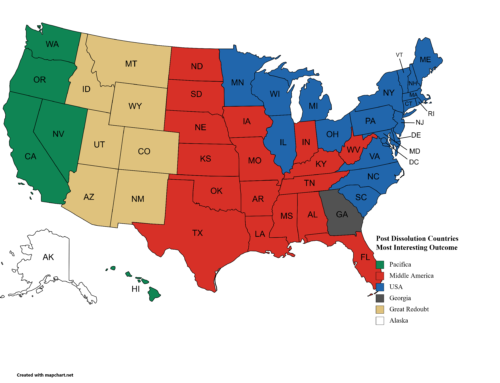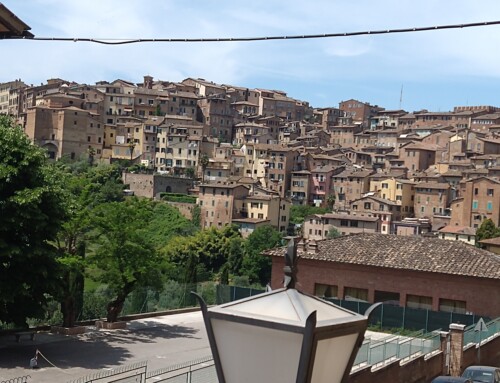More is better, right? More food for less money at the buffet; trackers on every shipping container to know what is inside and where it is in the world; more watts for less money per light bulb; more gigabytes of data per month on your mobile phone plan; more surveillance to help stop terrorist attacks. But I’d like to offer an alternative idea. More and more is not necessarily better. More often diverts our attention from what is important and gives us a false sense of security. Hang with me here.
The more open, democratic, bureaucratic a country is, the more the culture values liberty, the more diverse the population, the greater the opportunities for the cream to rise to the top, for innovation to flourish, and for a greater number of people to attain a greater standard of living. Yet that very openness, heterogeneity, and liberty can allow the country to be more vulnerable to attacks on its population, infrastructure and business and financial secrets. The Islamic State attacks on Paris on November 13th and the mass shooting in San Bernardino showed once again how difficult it is to stop terrorists from attacking where and when they please.
I remember being asked by multiple people on 9/11/2001 whether they should move from wherever they lived. I had someone tell me that she would gladly give up some of her liberties to be safer. I quickly asked her to seriously reconsider that statement since it is unlikely that she would ever be safer than she was that day, and that if she was successful in giving up those liberties, it would be very unlikely that she could ever get them back.
As Rosa Brooks wrote in Foreign Policy, increased surveillance may help detect a plot before it happens, but it will certainly lead to more false positives and noise through which the few analysts (who will not see their numbers increased as more information needs to be sifted through) will have to search for real threats. In Fresno the police call their new command center when going on a call to receive the “threat score” for the location or individual. Police and those wanting more security see the computer program, which collates data from multiple sources and gives a green/yellow/red “score”, as an important tool for law enforcement. But when demonstrating the utility of the program to a journalist, his “score” came up green. Yay! Program works. Oh wait, when searching his address, his “score” comes up yellow. Why? The police analysts surmise that it might have to do with who lived in the house before him. So why would the police think this will help them if there are going to be more false positives with all the attendant issues that arise from that.
We think that more information will allow us to realize savings from efficiency. But the simple light bulb shows us that our nature does not allow that for the population’s mean: As prices fall, our use of light climbs in exact proportion. For several years now, physicist Jeff Tsao at Sandia National Laboratories has been digging into the economic cost-benefit ratios of artificial lighting. Analyzing data sets spanning three centuries and six continents, Tsao and his coworkers at Sandia have concluded that “the result of increases in luminous efficacy has been an increase in demand for energy used for lighting that nearly exactly offsets the efficiency gains—essentially a 100% rebound in energy use.”3 The Sandia group’s equations aren’t holy writ, but with remarkable consistency, human beings, when faced with the availability of a cheaper and more efficient lighting technology, simply use more of it. We don’t bank the savings, but instead fall into what is known as Jevons’ paradox, which states that technological improvements can be counterproductive if the resultant savings are spent rather than saved.
You can look almost anywhere in human technological history to see that as technology designed to save time, effort, and risk is not enough to change human behavior. With more information and technology that ought to have helped manage our time, Americans should have seen increases in efficiency and work fewer hours today than 40 years ago, yet neither is true. The Transportation Security Administration ought to have made us all more secure when we travel, yet the security theater we all participate in has only given us longer lines while their own inspector general says they couldn’t find hidden weapons in 67 of 70 live tests in airports.
For those that are still with me, thanks. What does this mean for senior leaders? Focus. Your job is to maintain organizational focus. Your job is to recognize when more of anything will take your peoples’ focus away from the objectives you set for them to achieve. If you buy timer systems for your lights and utilities to lower your power bills, don’t set them to turn off so late that you never realize the efficiency. If you decide to start gathering more data for your operations to refine your decision accuracy but don’t realize that you’ll need more people to analyze the data, you may turn out to actually slow the process you’re trying to make better.
In days past, when people knew little about what was going on in the world, and what they did know was mostly local or else at best days or weeks old, we were all at least as happy as we are today, and probably more so. Leaders’ decision processes were no different than they are today. They made the best decisions based on the information available at the time those decisions were required. Today there may be more information but it doesn’t necessarily make the decisions any better. In fact, I’d argue that leaders today delay decisions in the hope that the one tidbit of information they’re hoping to see will eventually show up.
Be smart. You rose to your present position by thinking things through and filtering out the noise that would otherwise grab your attention from the objectives. Think hard about how to balance the allure of free and more and better and safer against the likelihood that more isn’t always better. More is more. You have to make it better.
Keep thinking…





Leave A Comment